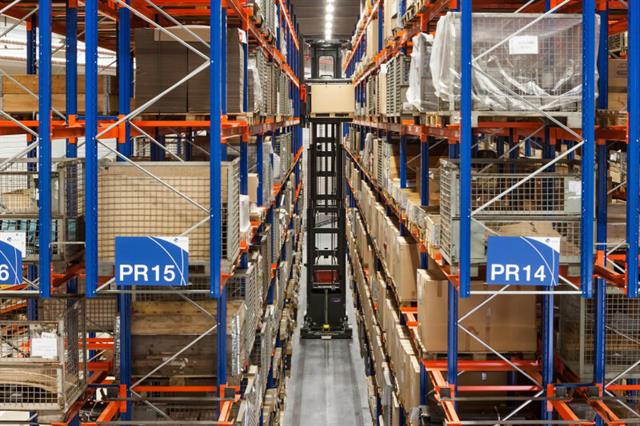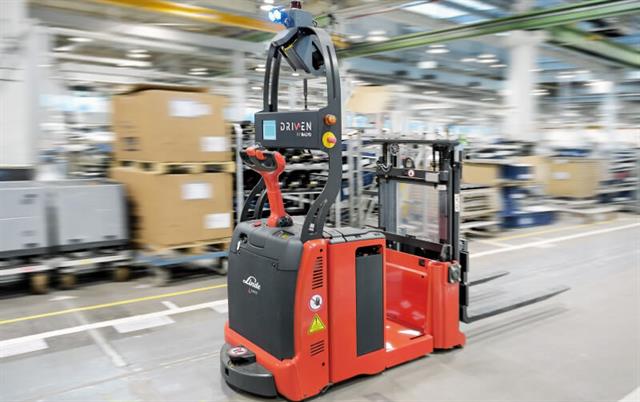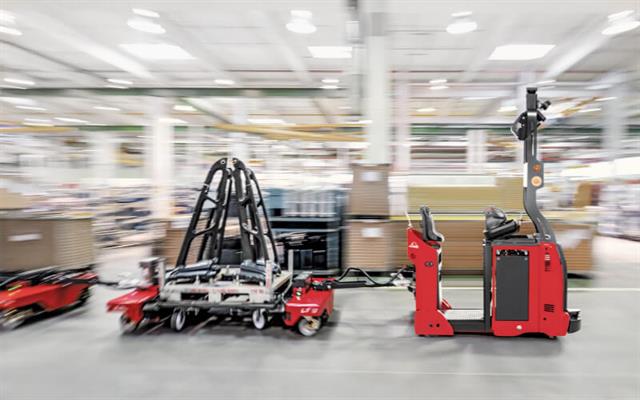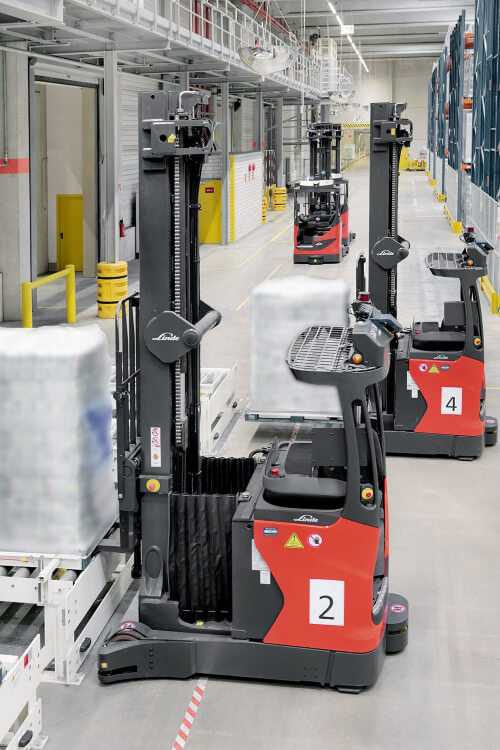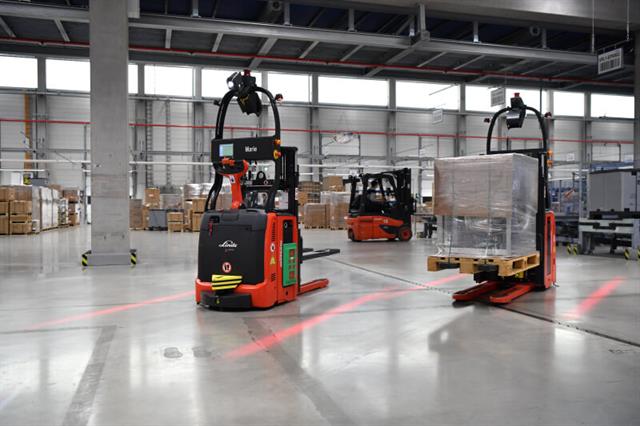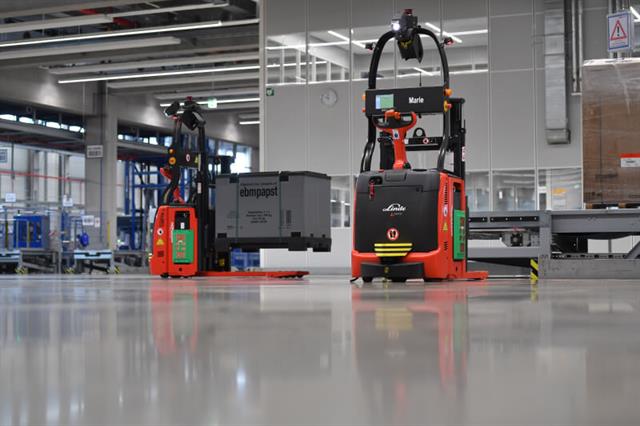Successful automation and how it works out
转载 2021-05-14 15:38 Linde Source:Linde
In an age of mounting competitive pressures and an ever-greater lack of skilled staff, automation is frequently the best answer - especially when it comes to repetitive, simple or less ergonomic logistics tasks in warehouses. And there is more good news: Contrary to what is often assumed, automation does not necessarily entail huge capital outlay and science-fiction-esque warehouse environments. Many successful projects start off relatively small, with the introduction of just one or two devices - but with a big impact on efficiency. And this also applies to small and medium-sized enterprises.
When it comes to warehouse automation there is a solution for nearly every need: it could be automated guided vehicles for moving goods from one floor position to another, or between conveyor belts or production lines and floor positions. However, before the project implementation can be started, some important requirements must be met.
Same but different: brownfield versus greenfield
When warehouses are to be automated there are two different approaches who describe the initial situation and strategy and have significant consequences on the project. Green field and brown field are, respectively, about starting with a totally clean slate, or attempting to modify and modernize what you already have. With a green field approach, it means taking account of process automation from the very outset of warehouse planning. With a brown field project, automation must be implemented retrospectively, and integrated into the existing infrastructure. As a result, the latter must consider many more factors, and this can place constraints on the scope of automation. With the former, with a new warehouse to be built from scratch, there is much more latitude in terms of design and planning.
In the case of an existing site project, intralogistics processes have developed historically, and cannot be mapped one-to-one by automated solutions. Therefore, in almost every case changes within the framework of existing processes are required. Another part of the issue is that existing manual processes are very flexible - they even work on demand. Customers who work with automated solutions instead must act in clearly defined ways and with a continuous process in place.
Make employees embrace automation
Another important prerequisite is a positive attitude towards automation. Stakeholders in the company, from directors, logistics managers and occupational safety staff to affected employees, need to become comfortable with a completely new set-up. The deployment of AGVs means the onboarding of "new co-workers" who have to be integrated into legacy environments, and who need space - both physical, e.g. between racking and aisles, and mentally, in terms of headspace, amongst human staff.
But even if everyone is open-minded towards automation analysis at the customer site might lead the experts from Linde Material Handling (Linde MH) to recommend the customer to stay with a manual operation because automation economically does not make sense for them. In this case it is often more beneficial to just reorganise manual processes to gain greater efficiency and productivity. Only if Return on Investment (ROI), Total Cost of Ownership (TCO), operational costs and other entrepreneurial arguments are making the decision strong enough, all sign for automation are set on go. Another proven way to give decision makers comfort is by a combination of visualisation and references. Sometimes a decision is also driven by other criteria which a company is focusing on, e.g. sustainability or driven by a specific situation, e.g. personnel shortage in the surrounding area.
Once the customer has decided on the automation project the preparation phase is carried out in a step-by-step manner. The sales consultants of Linde MH always start with an analysis of how internal logistics are handled presently. Based on these findings a structural plan for optimising processes and material flows is set up. If the customer agrees on the proposals, the implementation phase begins. New rules must be adopted and are part of the changed mindset required. All manual logistics and production processes must be adjusted so that they are automation ready. This is basically because AGVs work at another pace than manually operated trucks and are based on firmly defined processes. Traffic rules ensure that automation always comes first. This is because people stepping in front of automated vehicles disturb the fluency of the automated process and efficiency suffers when an automated warehouse truck must stop and restart repeatedly after the obstacle is out of the way. To make employees understand the requirements of automated vehicles and behave accordingly it is helpful to involve them at an early stage. Last but not least a clearly agreed acceptance procedure for the hole automation project with performance and availability tests for the automated solutions as well as a safety checks have to be defined.
Getting prepared: infrastructure planning
If the right mindset is assured and all organizational issues clarified, then it is time to move on to detailed infrastructure planning. Lighting in warehouses needs close examination prior to automation because AGVs often navigate by means of "seeing" physical structures in their surroundings. If AGVs rely on optical sensors, then poor lighting can blindside them. Consideration has to be given to the time of day, the seasons, and incidental sunlight through windows. The flooring is another factor. For AGVs to move swiftly and reliably through any facility, they need smooth, flat ground. This means rectifying any bumps or unevenness in advance to ensure the seamless flow of traffic. Further obstacles include steep inclines and extremely slippery floor coverings that might cause an AGV to slide off course when starting, accelerating or braking. Another key requirement is a powerful warehouse management system and an intelligent material flow control solution. In addition to ensuring the smooth movement of goods, these also deliver the information and transparency that are vital to an automated facility. The data enables all core processes to be accurately modelled and seamlessly managed. Finally, the deployment of AGVs requires a reliable, stable and broadband WLAN (Wi-Fi) interface. After all, the vehicles need to continue operating during the lunch break while employees intensively use their smartphones. Because AGVs continuously communicate with each other and the central control software via the local Wi-Fi network it is in many cases advisable to establish a separate, dedicated network just for AGV communications.
Project planning and realization from a single source
With the solutions of Linde Material Handling customers get the total package: automated warehouse trucks, automation technology, process expertise, order picking expertise, and service. In addition, the extensive branch and dealer network offers companies a reliable, quick and effective service of their automated "colleagues".
By Frank Heptner, Senior Director Automation & Intralogistics, Linde Material Handling
Relevant Info
More- Flexi adds new Halo Bar to range
- Review of the North American Lithium Forklift Battery Market: The Seven most popular brands in the USA and Canada
- Recalculating Autonomous Lift Trucks
- Top 20 lift truck suppliers 2021
- IFOY winners recognised
- Confused about “ATEX” compliant lithium-ion forklift batteries?
- Lift Truck Series: Narrow aisle trucks on the rise
- Balancing act
- Maximising resources in the intralogistics industry
- National Forklift Safety Day launch for UKMHA
